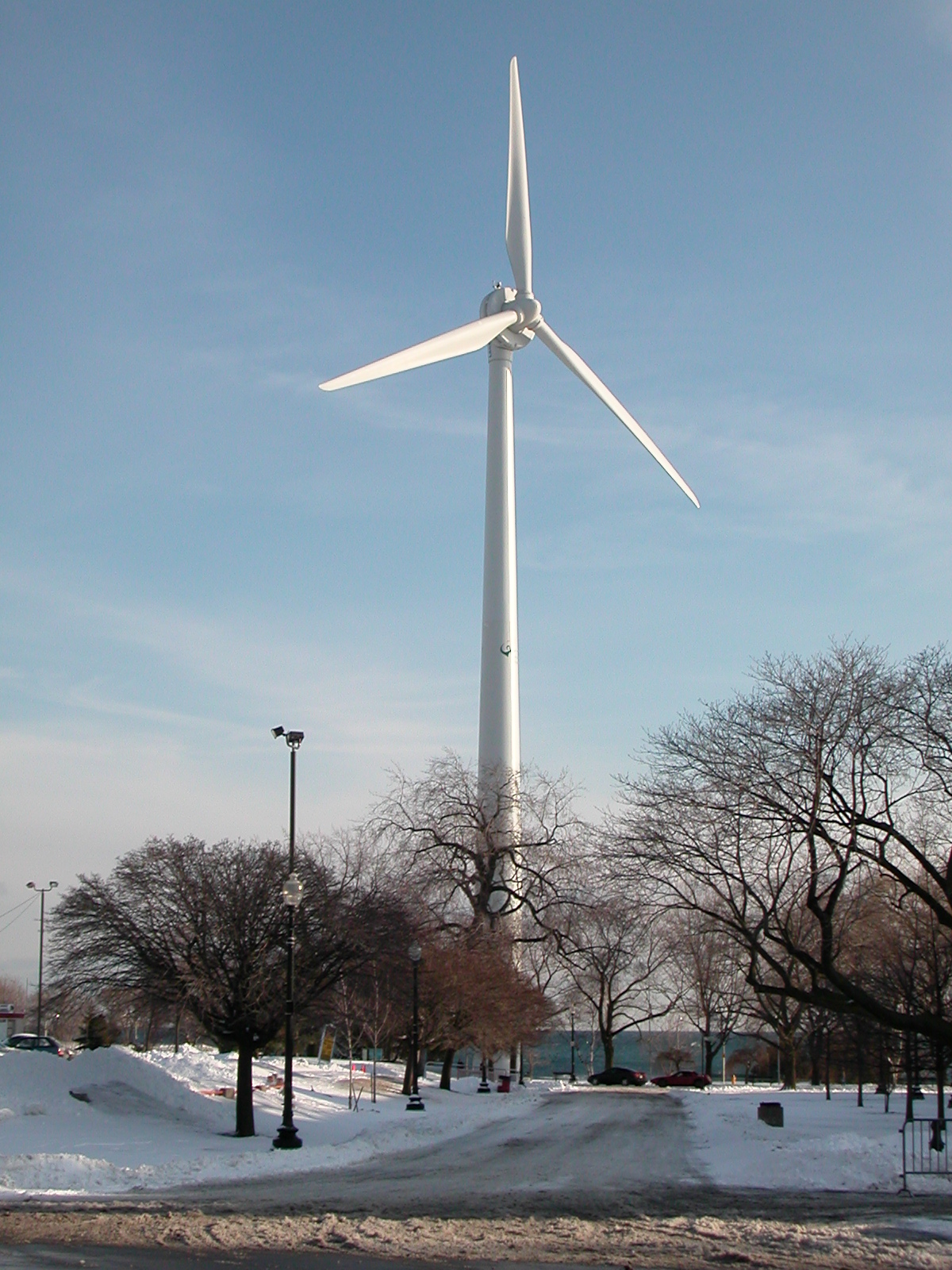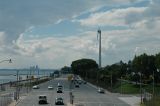Update: now posted on the Friends of Wind Blog: Windshare: A stellar investment, a gallant icon.
I’ve never regretted my investment in WindShare. When I heard about the plan to put a wind turbine at Exhibition Place, I’d been in Canada for less than a month. We didn’t even have a permanent place to live when I put down my $501. I knew, though, that it would be an investment in the future.
Five hundred bucks seemed quite a bit of cash back then, but these days, it’s less than a flight to anywhere. It’s less than a weekend mini-break. It’s a couple of month’s car insurance, or worse, a car maintenance bill which I wouldn’t even grumble over now. No-one ever expects a car to appreciate after you’ve had the shocks redone, so in the same way, I don’t feel bad about my investment in WindShare not having a financial return. It’s had a much more rewarding return than mere money.
Sure, the initial offering indicated that we were supposed to make a reasonable return, what with the deregulation of the Ontario energy market. You don’t remember that? When the Conservative Ernie “Odo†Eves administration deregulated the market back then, you may have blinked and missed it. At the first taste of $100 power, the deregulation was cancelled, because market forces must always take second place in this province to re-electability. Poor Ernie; we almost saw his like again …
WindShare was supposed to have at least two wind turbines, which would have helped the return to members. For $REASONS, the other one didn’t happen: bureaucracy, lack of suitable turbines, fun with the TPA, lack of headroom from the island airport; any/all/some/none of the above can be cited. We were also supposed to export the model to a community-owned wind farm, but that didn’t happen. The province decided that any and all transmission and distribution near the Bruce was off-limits to all but the eponymous power company. So it goes.
Because of my wind power experience in the UK, I handily got on the inaugural board of WindShare. We campaigned for members around the city. We spoke to anyone who wanted to listen. We built the thing because we believed in the statement we were making. We didn’t hide our pride: we put the turbine where it would be seen by millions every day. If we could’ve put it on the lawn at Queen’s Park, we would.
We even sourced as much of the turbine locally as we could. The tower was made in Ajax. The blades were made in Huron Park. If there had been FIT Domestic Content rules back then, we would’ve aced them.
Now, not quite everything went swimmingly. A few weeks after construction, our vendor went bankrupt. A robust service agreement with a vendor is key to a wind project’s success. With the incredible support of WindShare’s partner in the turbine, frequent visits from the former service tech, a great local electrical service company, and hours and hours of work from dedicated volunteer members, we kept the turbine spinning. Try that with a nuclear plant. Actually, on second thoughts, please don’t.
We also had a slightly smaller set of blades than we’d ordered, having been promised longer ones by the now-defunct vendor. This meant we had to derate the turbine a bit more to avoid challenging operational conditions. Every year at CNE time, we’d lose comms to the turbine as one of the carny trucks would inevitably take out the overhead phone line. We fixed that one.
Other problems cropped up, too. The inverter would get a bit warm in summer heat, and go for a siesta. After building an effective cooling system, the inverter chugged along for a few years until it needed to be replaced. It was interesting working in Canadian generation back then; run-of-the-mill European power electronics were seen as weird new-fangled voodoo in Ontario. As we have lots of wind and solar now, IGBTs are no longer a source of IDKs.
Our wind resource wasn’t quite where we thought it might be, either. ExPlace has a lovely clear fetch across the lake, and historical data from the island might’ve indicated that. Who knew that most of the wind would seem to come over from the city, fuelled by the urban heat effect, and turbulent as all-get-out from chasing through the buildings? Well, we do. With ten year’s hindsight and operational data, that is.
So this turbine — little, (sometimes) broken but still good — what did it start? Well, it lead to the idea of community sustainable power in Ontario. It lead to the abolition of coal power in the province (which, if you can remember the acrid yellow goo that passed for air downwind of Lakeview, you’ll appreciate). It lead to the world-leading FIT program, driving the development of Ontario’s wind and solar industries, which as the last election shows have the overwhelming support of the people of Ontario. It also lead, on a personal scale, to my last decade’s employment building this Province’s sustainable energy base.
So when I see the WindShare turbine — whether fleetingly, from a GO train, or at extreme length when stuck on the terminally gridlocked Gardiner Expressway — it still makes me smile. We built an icon. We built careers then unknown to the province. We built hope. And from that, the return on satisfaction is better than any deal you can get on Bay St.

 It’s kind of apt, given that the turbine’s been out of service for about a month. I liked the old days, when the turbine worked but the website was kinda crappy.
It’s kind of apt, given that the turbine’s been out of service for about a month. I liked the old days, when the turbine worked but the website was kinda crappy.